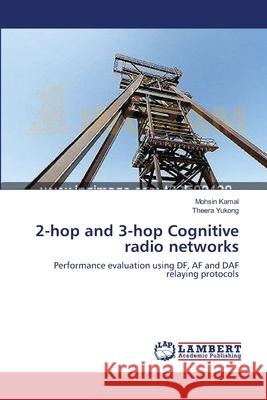2-hop and 3-hop Cognitive radio networks » książka
2-hop and 3-hop Cognitive radio networks
ISBN-13: 9783659159381 / Angielski / Miękka / 2012 / 64 str.
Cognitive radio is an evolving wireless technology employed to increase the frequency spectrum utilization of the limited spectral resources. Cooperative communications has been established as a potential method of solving the fading effects in wireless communications, improving the reliability of network performance, network throughput, and adaptability. The cooperative diversity is achieved by using 2-hop decode amplify and forward (DAF) and 3-hop decode and forward (DF) and amplify and forward (AF) relaying protocols in cognitive radio network. The data is encoded by using Alamuti space time block codes (STBC) and transmitted over a wireless Rayleigh fading channel. The distance and the number of relays are variable parameters which affect the performance of the cooperative cognitive radio network. In order to sense the presence or absence of Primary User (PU) signal within a spectrum in a cognitive radio network, energy detectors are used at the cognitive controller. If energy of PU is less than a threshold then it indicates that PU is absent and vice versa. The probability of detection and Bit Error Rate (BER) will vary in 2-hop and 3-hop relay networks.
Cognitive radio is an evolving wireless technology employed to increase the frequency spectrum utilization of the limited spectral resources. Cooperative communications has been established as a potential method of solving the fading effects in wireless communications, improving the reliability of network performance, network throughput, and adaptability. The cooperative diversity is achieved by using 2-hop decode amplify and forward (DAF) and 3-hop decode and forward (DF) and amplify and forward (AF) relaying protocols in cognitive radio network. The data is encoded by using Alamuti space time block codes (STBC) and transmitted over a wireless Rayleigh fading channel. The distance and the number of relays are variable parameters which affect the performance of the cooperative cognitive radio network. In order to sense the presence or absence of Primary User (PU) signal within a spectrum in a cognitive radio network, energy detectors are used at the cognitive controller. If energy of PU is less than a threshold then it indicates that PU is absent and vice versa. The probability of detection and Bit Error Rate (BER) will vary in 2-hop and 3-hop relay networks.











